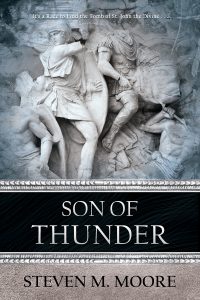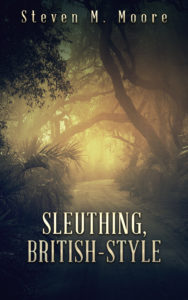Scenes…

Dramas aren’t the only literary works that have scenes. They naturally occur in short fiction and novels (maybe even biographies?). Authors can, in fact, forget about outlining if they move from scene to scene, not that this is necessarily recommended because other story elements are important too.
If a newbie author trying to figure out where to break the prose into chapters and sections when point-of-view (POV) doesn’t do that naturally, scenes can help make that determination. In fact, readers might get upset by abrupt scene changes within a section or chapter as much as they do with abrupt POV changes (often called “head-hopping”), so both can help authors decide where natural breaks occur. Moreover, scene changes and POV changes often go hand-in-hand: Different scene, different POV, because the scene features a different character.
Even when settings remain the same in flashbacks or back story, there’s a scene change because a scene involves time as well as space. A setting might remind a character of what happened in that flashback or back story, yet there is a change even though the setting is the same: A jump into the past in the character’s mind. This also presents two opportunities: First, to show how the character’s mindset has changed over time; and second, to provide a pause in the action.
Does this seem complicated? It’s really not. It all comes naturally the more fiction you write. Like riding a bicycle or driving a car, once learned, it becomes second nature. But that shouldn’t stop old hands from reflecting on what was just written. Even old hands can improve their prose!

There are some things to watch out for, of course. Just like in drama, what occurs in a scene needs to be meaningful. For example, a gratuitous sex scene might be an effective hook at the beginning of a story, no matter the genre, but it must mean something farther into a story.

Another example that’s a bit difficult to pull off is the scene where a character dies. An editor of Son of Thunder, for example, reacted strongly when I killed off a character whom she liked. Perhaps I should have built up to that scene in a better way? The same thing happened in Aristocrats and Assassins when a reviewer reacted strongly after I killed off a character. In the first case, I might have built up the character too much; in the second, I thought my character description was a bit more ambivalent, so there’d be no problem. Of course, both negative reactions are anecdotal and don’t represent a valid statistical sample.
Of course, both scenes could be justified by their shock value. Twists in fiction scenes, especially mysteries, thrillers, and sci-fi, can please readers like surprises from a pinata. That has value too.
Settings are often confused with scenes. The latter is a more general concept because scenes have their own plot, characters and their POVs, dialogue, and settings—they’re miniature, self-contained stories for the most part.
Authors can put drama into their stories with scenes, so the better they are, the better the drama.
***

Comments are always welcome.
Even short fiction employs scenes! My collections Sleuthing, British-Style, Volumes One and Two contains quite a few. Volume One is available on Amazon, and Volume Two can be downloaded for free—see the list on the “Free Stuff & Contests” web page at this website. (More can be found in the “Friday Fiction” archive and will eventually end up in PDF downloads found in the list.) I’m binge-reading others’ British-style mysteries, and they’re influencing my short fiction and their scenes as well as the last novels in the “Esther Brookstone Art Detective” series. They’re a great way to learn about the milieu and culture of our friends across the pond!
Around the world and to the stars! In libris libertas!
